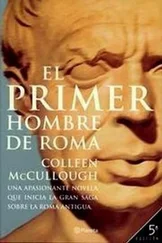That told Delia each of them owned an average intellect; that they were satisfyingly entertained by whatever their radio and television broadcast, and that if they read at all, it was newspapers, magazines and throw-away paperbacks. If they played solitaire or dominoes or did crosswords, any evidence was gone, and that probably meant they hadn’t. Everything left behind was cheap, ordinary and uninspiring: over-the-counter medicines, supermarket cosmetics. After Mary Tennant, no perishable foods were left behind, and none of the six had left household cleaners or a stock of plastic bags. Had someone cleaned up? If so, no attention had been paid to fingerprints, for the same set was found all over each apartment, presumably the occupant’s. None was on file with any large agency—a dead end.
Plenty of people vanished for a few months, then turned up unwilling to give an explanation; Missing Persons was full of files solved that way—by the subject—and from thence were sent for permanent storage to the Holloman PD repository out on Caterby Street. But no matter how innocent a disappearance might be, the file on closure was a fat one, thanks to biographical data accumulated as the investigation ground on, always too slowly to please the relatives. Whereas the Shadow Women were thin files, devoid of biographical data; none had a past, none seemed likely to have a future. Certainly no one had ever come forward with information about any Shadow Woman, and the date was rapidly approaching for 1969’s victim to bob to the surface.
They rented at the beginning of January, paid first and last month’s rent, vanished by the end of June, and were invaded by the letting agent in mid-August, two weeks after the last month’s deposit was exhausted. Which was why Carmine had put her on the case. August. Who would 1969 be? By now every Realtor in the county was aware of the Shadow Women, and taking immense pains with the details of any rentals in early January. Two likely names had come up at the time, but neither turned out a possible candidate; whoever she was, her rental must have fallen down a crack. That was usually the way, Delia reflected. Monday the fourth day of August today, a matter of ten to fifteen days to go ….
She glanced at her watch. An hour more, and she’d scoot. The pathetic little bunch of skinny files needed their photos back inside, but suddenly she decided to take them instead to the new police artist, Hank Jones.
Then she noticed a file Carmine had withdrawn from Caterby Street, and realized that he must have left it for her to look at as well. Yes, he’d clipped a note to it that said “Our most famous Missing Persons file.” Oh, it was old! 1925. Sidetracked, Delia pulled it forward and opened it upon an 8 x 10 black-and-white head shot of a very beautiful young woman: Dr. Eleanor (Nell) Carantonio. An up and coming young anesthesiologist at the Holloman Hospital, Dr. Carantonio had failed to turn up to give a morning’s scheduled anesthetics, and was never seen again.
A haughty, white-skinned face framed by fashionably shingled black hair, with dark eyes that managed to flash fire even in the picture …. No Shadow, this! An opinion borne out by reading the forty-four-year-old file, which revealed circumstances very different from the Shadows. Dr. Nell’s profession was known, her life an open and unimpeachable book, and she was wealthy. Since she left no will, her nearest relative, a first cousin named Fenella (Nell) Carantonio, had had to wait over seven years to take possession of two million dollars and a huge mansion on the Busquash Peninsula. Eleanor—Nell. Fenella—Nell. No trace of the young woman’s body had ever been found, from 1925 to this day. Age twenty-seven when she vanished. The second Nell was nine years her junior, and her only known relative.
No help or guidance there, said Delia to herself, picked up her photos and got to her feet. Off to the ME’s air-conditioning and the artist the ME’s and PD shared. As she walked Delia continued to think about the most baffling puzzle of them all—why did the Shadow Women have studio portraits of themselves? And why had the portraits been left behind?
She was convinced the women were dead, but no bodies had ever come to light, and she had excellent reason to know that even the most bizarre methods of getting rid of bodies had been thoroughly explored. If a body were considered as over a hundred pounds of meat and fat plus some really big bones, then the disposal of that body was every killer’s worst nightmare.
Sadly (for Delia was a woman who adored flamboyance) what her case seemed to be boiling down to was rather humdrum. A killer who prowled in search of shy, retiring, very ordinary women, and, having found one, did whatever his fantasy prompted before taking her life, then managed to dispose of her invisibly. The rental of apartments was a year-round activity, and in a student town many of them were let furnished. The dates were his kinks, had nothing to do with the women. Delia was obliged to admit to herself that she was automatically drawn to the more extravagant explanations of these rare cases that made no sense. In the cold blast of air that assaulted her as she went around in ME’s revolving doors, she decided that the Shadow Women would end in a shabby, dreary manner satisfying no one. What an indictment her adjectives and adverbs were! Humdrum, shabby, dreary. Lives were being taken, and she was cataloguing the method of their taking on a scale graduated in degrees of glamour! Well, she knew why: it kept Delia the detective on her toes, whipped up energy, enthusiasm. Flippant it may be, but as a technique it worked a treat.
Ginny Toscano had attained sixty, and was retiring, which led to some quiet cop cheers; when she had started out as the police artist the work had been far more, to use her word, “civilized.” Some of what she was asked to do these days she found beyond her stomach or her talents, for the world—and her job—had changed almost out of recognition. And the very moment that a new artist was hired, Ginny used up the time until her birthday on annual leave.
The big studio and its accompanying laboratory/kitchen had been tastefully decorated in shell-pink, institution oak and off-white, but when Delia entered she found hardly a morsel of Ginny remained. I hope, thought Delia, that the poor dear is having a wonderful time in Florence!
The walls were almost completely papered in unframed posters of landscapes not from this Earth, their skies transected by sweeping curves of what looked like Saturn’s rings, or holding two suns as well as several moons, while the foregrounds were soaring multicolored crystals, or weird mountains, or erupting volcanoes, or cascades of rainbow-riddled fluid. One depicted a robot warrior mounted on a robot Tyrannosaurus rex at full trundle, and another was the famous half-buried Statue of Liberty from Planet of the Apes. Fabulous! thought Delia, bewitched.
In the midst of this other-worlds environment a thin young man was working on the top sheet of a slab of paper with a dark German pencil, his models clipped to the top of his architect’s table, well above the paper block: a series of photographs of Jeb Doe, with one of James Doe at either end of the row.
“Bugger!” Delia cried. “Lieutenant Goldberg beat me to it.”
He looked up, grinning. “Hi, Delia.”
“Any chance you can squeeze me in too, Hank?”
“For you, baby, I’d squeeze to death.” He put his pencil down and swiveled his high chair to face her. “Sit ye doon.”
In Delia’s estimation he had one of the most engaging faces she had ever seen—impish, happy, radiating life—and his eyes were unforgettable—greenish-yellow, large, well spaced and opened, and surrounded by long, dense black lashes. His negroidly curly hair was light red and his skin color that of a southern Chinese. His head was big but his face, delicately fine-featured, tapered from a high, wide brow to a pointed chin; a dimple was gouged in each cheek, this last a characteristic that made Delia weak at the knees. He made Delia weak at the knees—Platonic, naturally!
Читать дальше












